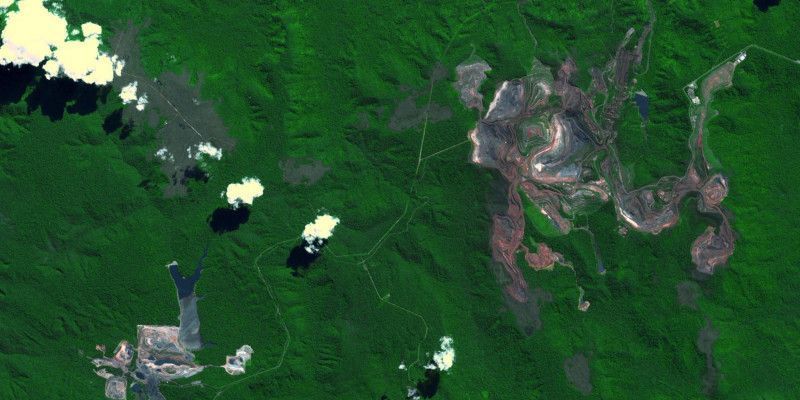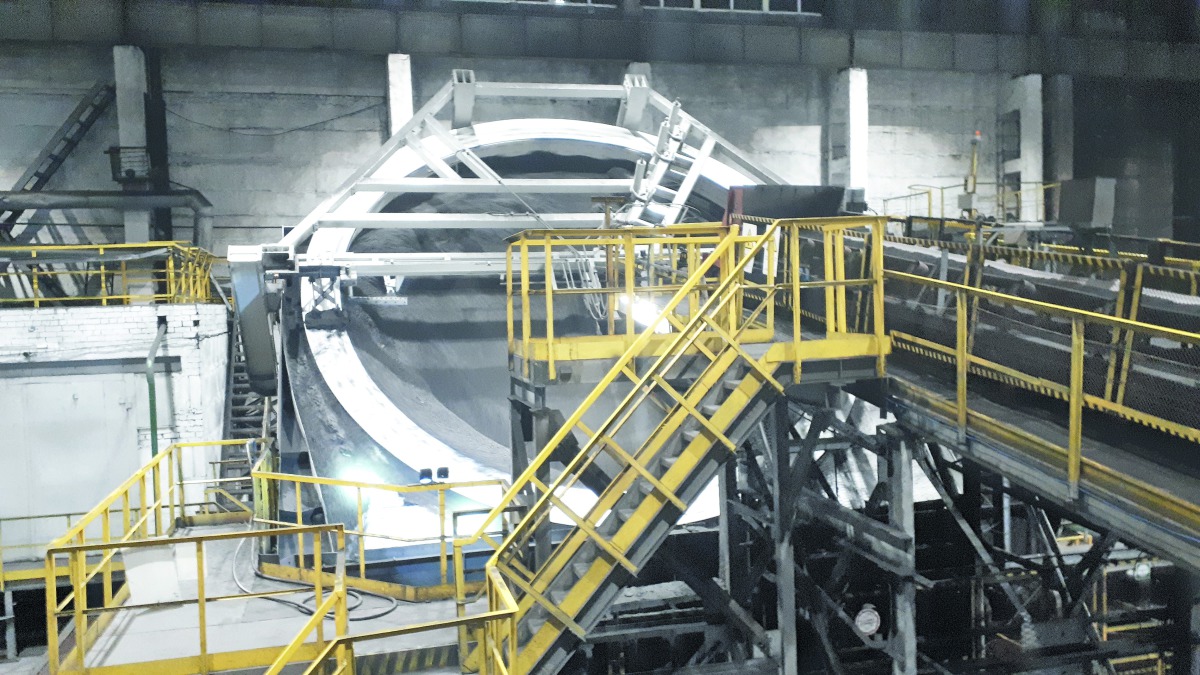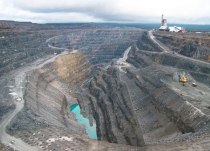Hazard radar for iron, copper and bauxite supply chains
02.03.2023100 major copper, iron ore and bauxite (“aluminium ore”) mine sites worldwide have been assessed for their environmental hazard potentials. Results have been published in an interactive map with a number of filter functions. In particular, companies can use the map to analyse environmental risks along supply chains and to support their environmental due diligence.
 The Carajás mine, the world's largest iron ore mine, is in the Amazon rainforest of Brazil
The Carajás mine, the world's largest iron ore mine, is in the Amazon rainforest of Brazil
© NASA/METI/AIST/Japan Space Systems and U.S./Japan ASTER Science Team Policy/
The results of the research project Pilot Screening of the environmental hazard potentials of mine sites (OekoRess III) represent a science-based contribution to the debate about the secure and sustainable supply of mineral resources.
On behalf of the German Environment Agency, 100 large copper, iron ore and bauxite mine sites were screened for their environmental hazard potentials. An evaluation scheme developed in a previous project (OekoRess I) and tested in ten case studies (OekoRess II) was applied. The method uses freely available information to provide a quick overview of potential environmental hazards at a mining site.
The outcome of the pilot screening is 100 environmental hazard profiles of major mining sites worldwide, presented in the form of an interactive map. It shows the global distribution of the sites and the results of the assessments. Filters and layers allow users to navigate the map according to their specific interests. For example, the map can display a particular environmental hazard potential, such as location in a protected area, for all sites. Filters allow users to narrow down the sites displayed according to specific combined criteria. Example: “Show all copper mines with relatively low ore content in regions with high water stress.”
A downloadable factsheet is available for each site, containing general information about the site (e.g. location, surface area, operator, production volumes), detailed assessment results for the twelve individual indicators of the evaluation scheme, concise information on state (regulation) and private (corporate social responsibility) governance, as well as a list of references.
Why the interactive map?
The 100 hazard potential profiles can be a powerful tool to help companies meet society's increased expectations of responsible corporate behaviour in global supply chains. In Germany, the Act on Corporate Due Diligence Obligations in Supply Chains has made these expectations legally binding for some companies since 2023. More far-reaching regulations at European level (Battery Regulation and EU Supply Chain Directive) will come into force in the next few years. This means that the information provided can be used as a starting point in risk analysis in the context of due diligence processes and in concurrence with step 2 of the OECD due diligence process: OECD Due Diligence Guidance for Responsible Business Conduct.
Civil society organisations and journalists can also use the results to identify starting points for more in-depth, on-the-ground research into environmental and human rights abuses in the international mining sector.
More about the research project
The 100 factsheets were reviewed in two stages: stage 1: experts and stage 2: mine operators. The final report describes the research process, provides a summary and offers a critical discussion of the research findings. It also draws conclusions and makes recommendations on the application of the methodology and the use of the results. In addition, the evaluation methodology used was developed iteratively during the screening process. A revised and updated edition of the methodology is available in English and Spanish. Due to the international relevance of the project, the final report is written in English only. It includes a German summary.




